At the nearby junction of Cheltenham Gardens and Central Park Road, there was a famous medicinal spring known as the Miller’s Well. Its water was said to cure a wide variety of ailments. The earliest record of the spring is in 1818, when it was set in open countryside. The Miller’s Well was covered over when the area was developed in the early 1900s. There is now no sign of the spring, yet this pub bears its name.
Prints, illustration and text about the different industries in East Ham.

The text reads: Early Development
The 12th century Queen Mathilda commanded that bridges be built across the River Lea and its chief tributary the Channel sea. That over the Lea was the first Bow Bridge, and both bridges together plus the causeway between meant that the new main route east from London had been established.
Also in the 12th century William de Montfichet, Lord of the Manor for this area, founded the Cistercian Abbey of Stratford Langthorne. The monks reclaimed considerable portions of what was generally marsh land, and in later centuries the village of Plaistow grew up on rising ground north of the reclaimed marshes, whilst Upton developed as the other local community.
The old Abbey occupied land where Abbey Road now is, but a century after Dissolution in 1538 its buildings were in ruin. The Adam and Eve pub now stands, it is claimed, where the altar once stood.
The Dissolution brought poverty to local people, the confiscated lands and riches being dispersed amongst absentee landlords. By the 17th century some improvement can be traced in the sprouting of local industries such as leather dressing (Plaistow High Road was originally Cordwainer Street), shoe making, dyeing and weaving.
Bow Porcelain
The Bow Porcelain Factory was founded by Thomas Fyre. He was born in Dublin but moved to East London and worked as a portrait painter. His sisters included the Prince of Wales and David Garrick.
In 1744 he took out a patent with Edward Haylyn, a glass-blower of Bow, to protect an earth found in America which could be used to make china or porcelain.
After four years experimenting Fyre took a patent of his own to protect the manufacturer of Porcelain. He built his porcelain factory in Stratford which in its heyday employed 300 people including 90 painters.
Fyre’s health was broken by years of enduring the intense heat involved in his process and he had to retire in 1759. He died in 1762.
Calico Printing
In 1676 William Sherwin (thought to be the first English calico printer) established works by the River Lea, the commencement of a local industry that lasted 200 years.
By the mid-eighteenth century there were 80 acres of calico grounds by the Channel sea. In the 19th century the industry became more a matter of factories then the out of door affair that it had originally been, and turned more to silk printing.
The bringing in of materials for the calico printers and the porcelain makers brought trade to the Lea and its tributaries. Coal and timber came up to wharves by Channel sea bridge, and lime to the kilns at Bow Bridge.
A photograph and text about Gerard Manley Hopkins.
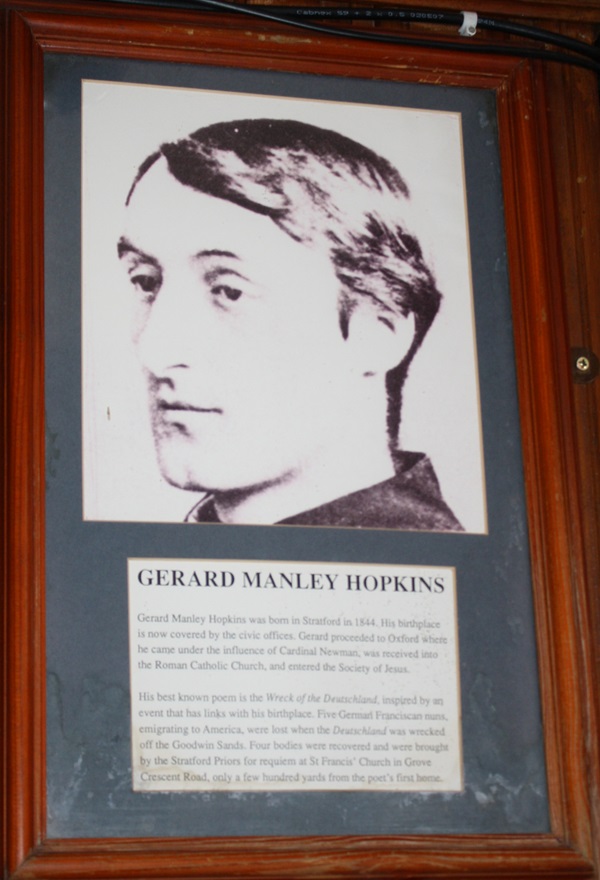
The text reads: Gerard Manley Hopkins was born in Stratford in 1844. His birthplace is now covered by the civic offices. Gerard proceeded to Oxford where he came under the influence of Cardinal Newman, was received into the Roman Catholic Church, and entered Society of Jesus.
His best known poem is the Wreck of the Deutschland, inspired by an event that has links with his birthplace. Five German Franciscan nuns, immigrating to America, were lost when the Deutschland was wrecked off the Goodwin Sands. Four bodies were recovered and were brought by the Stratford Priors for requiem at St Francis’ Church in Grove Crescent Road, only a few hundred yards from the poet’s first home.
A print and text about Lord Lister.
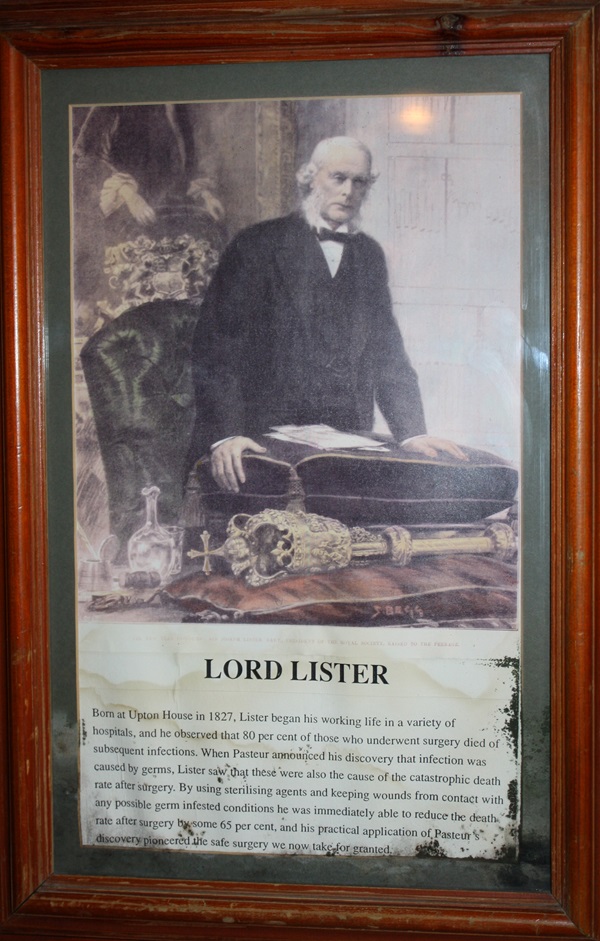
The text reads: Born at Upton House in 1827, Lister began his working life in a variety of hospitals, and he observed that 80 per cent of those who underwent surgery died of subsequent infections. When Pasteur announced his discovery that infection was caused by germs, Lister saw that these were also the cause of the catastrophic death rate after surgery. By using sterilising agents and keeping wounds from contact with any possible germ infested conditions he was immediately able to reduce the death rate after surgery by some 65 per cent, and his practical application of Pasteur’s discovery pioneered the safe surgery we now take for granted.
A print and text about Lord Lister.

The text reads: Lord Lister was born in 1827 at nearby Upton House. He was one of the community of Quakers who had settled at Upton.
After qualifying in medicine, he became a professor of surgery in Scotland, and then the professor of clinical surgery at Kings College Hospital, London, in 1877.
He made important observations on the coagulation of blood, and inflammation, but his great contribution to all our lives was his pioneering of the antiseptic system. This revolutionised surgery, and led to it becoming a safe form of treatment, rather than a desperate last resort.
A photograph and text about John Jeyes.

The text reads: John Jeyes in his old age, about 1890. He was a pioneer of the true germicide. Not 50 years before he opened his factory in the grounds of Richmond House, quite sensible people had still not realised that the danger to health lay in what was the smell – not the smell itself.
An illustration and text about Doctor Dodd.

The text reads: Reverend Dr William Dodd was a West ham curate and lecturer, and chaplain to the King in the mid eighteenth century. But he was ambitious for advancement. He lost his royal chaplaincy through attempting to bribe his way into a rich crown living.
Subsequently he got into debt and forged a bill for over £4,000 in the name of a former pupil, the Earl of Chestfield. His clumsy effort was spotted immediately. Forgery was then punishable by death. In spite of petitions for clemency he was hanged at Tyburn. Dodds lived in a house at the northern end of Balaam Street, Plaistow.
An illustration and text about George Parker Bidder.

The text reads: As a child George Parker Bidder became known as the ‘calculating boy’ due to a remarkable faculty for mental arithmetic, so much so that his father toured him as a fair ground attraction, and he even performed before Royalty.
Some gentlemen in Edinburgh took it upon themselves to get him properly educated and paid his father a sum of money in ‘recompense’. After attending Edinburgh University he worked under and then in partnership with Robert Stephenson. Bidder and Stephenson in Canning Town bear witness to their association with this area. Bidder was engineer for the North Woolwich Railway, the Victoria Dock and the London, Tilbury and Southend Railway.
A print remembering local heroes.

The text reads: John Travers (‘Jack’) Cornwell VC (1900-16) came from Little Ilford. He was on board HMS Chester at the Battle of Jutland and remained at this post whilst fatally wounded.
East Ham’s Memorial to the Fallen in Central Park completed in 1921. In the First World War 1600 men from East Ham died.
Edgar Kinghorne Myles VC (1894-1977) was born in Milton Avenue. He rescued wounded men in no man’s land in Mesopotamia in 1916, and repeated the feat at the Battle of Kut the following year.
A display in the pub commemorating those who fought with the services and forces, such as the Royal Navy, the Royal Air Force and the Parachute Regiment.
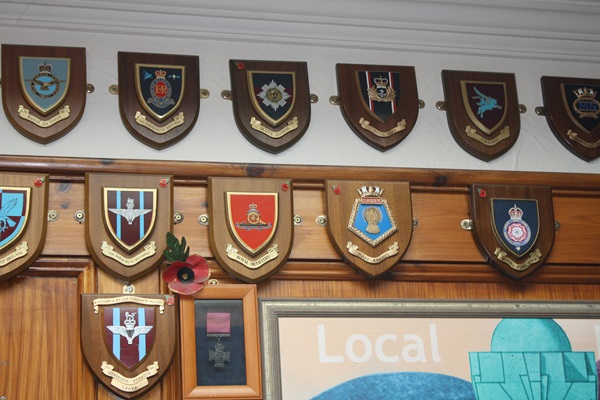
Prints of High Street North, in 1905 and 1903.

Prints of the early days in East Ham.

Top: Plashet House, when it was home to Elizabeth Fry, c.1810
Middle: Green Street House (Anne Boleyn’s Castle). The Tower was, according to local tradition, built by Henry VIII for Anne Boleyn
Bottom: Boleyn Castle, 1904. The Tower was demolished in 1955.
Photographs of East Ham Technical Institute c1910 and Passmore Edwards Hospital c1908.
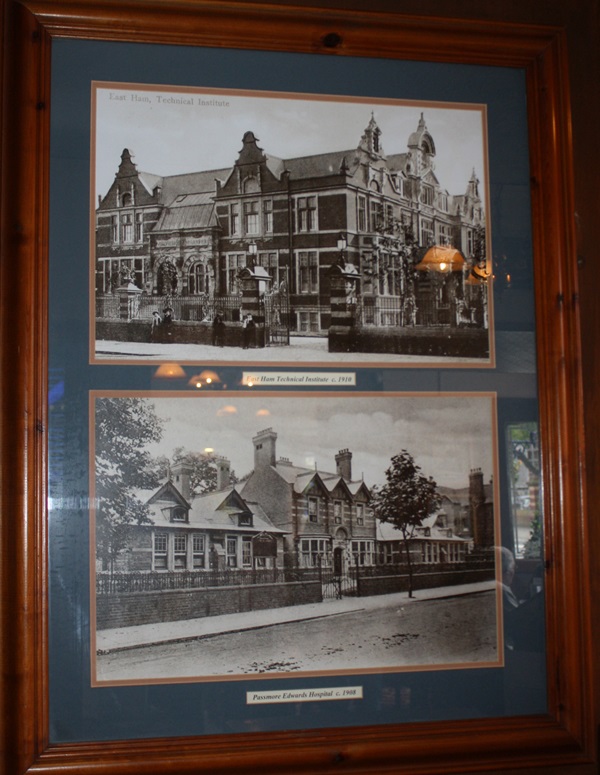
A photograph of High Street North, East Ham c1912.
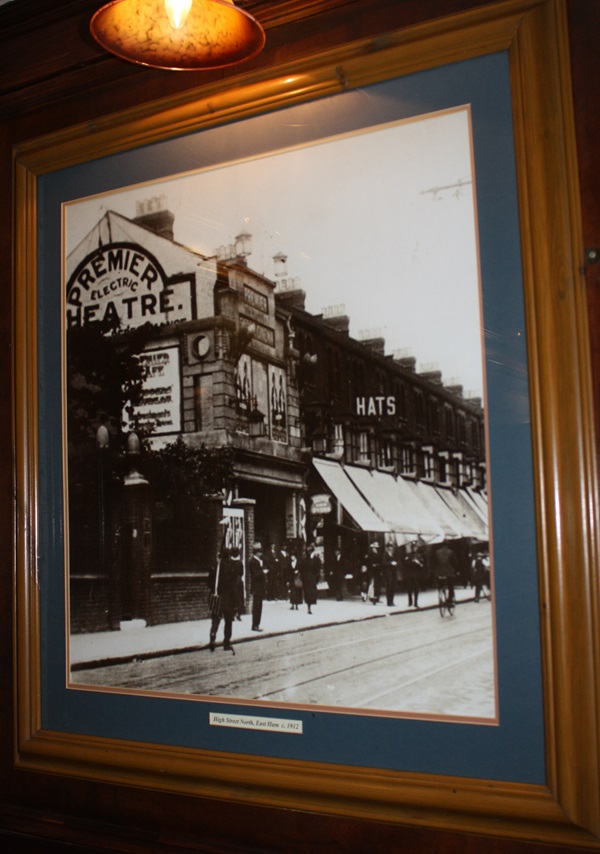
A photograph of West Ham High Street c1910.
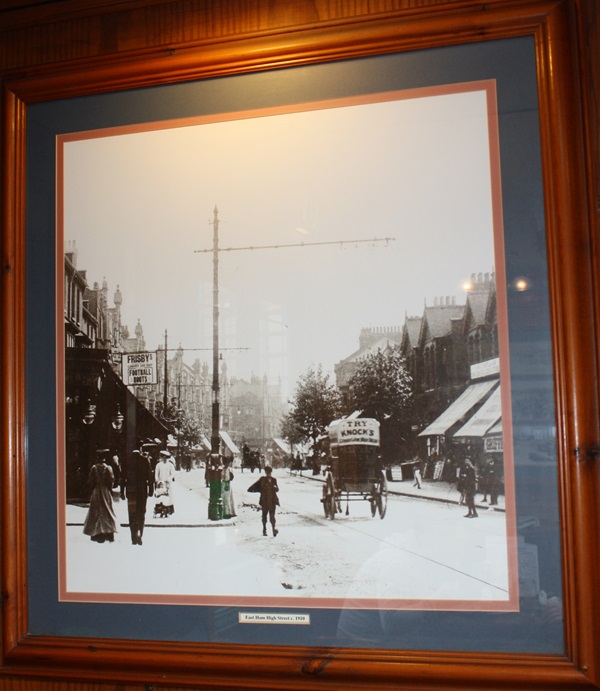
Photographs of Barking Road c1910.

A photograph of Victoria Station, continental and mainline platform c1908.

Photographs of East Ham.
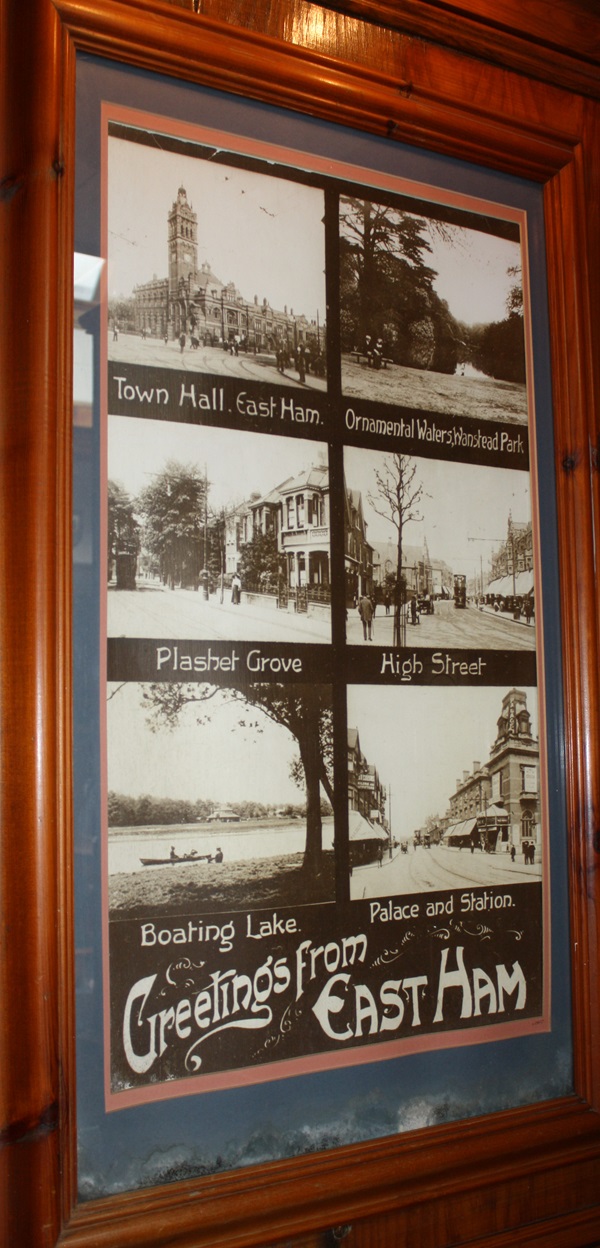
Top left (clockwise) Town Hall, Ornamental Waters, High Street, Palace and Station, Boating lake, Plashet Grove.
Photographs of High Street, East Ham.

An external view of the pub – main entrance.
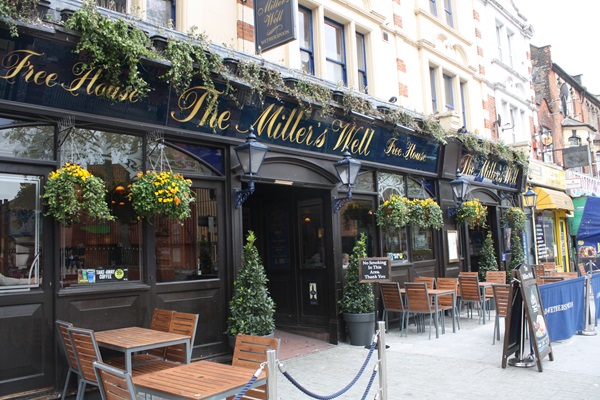
If you have information on the history of this pub, then we’d like you to share it with us. Please e-mail all information to: pubhistories@jdwetherspoon.co.uk